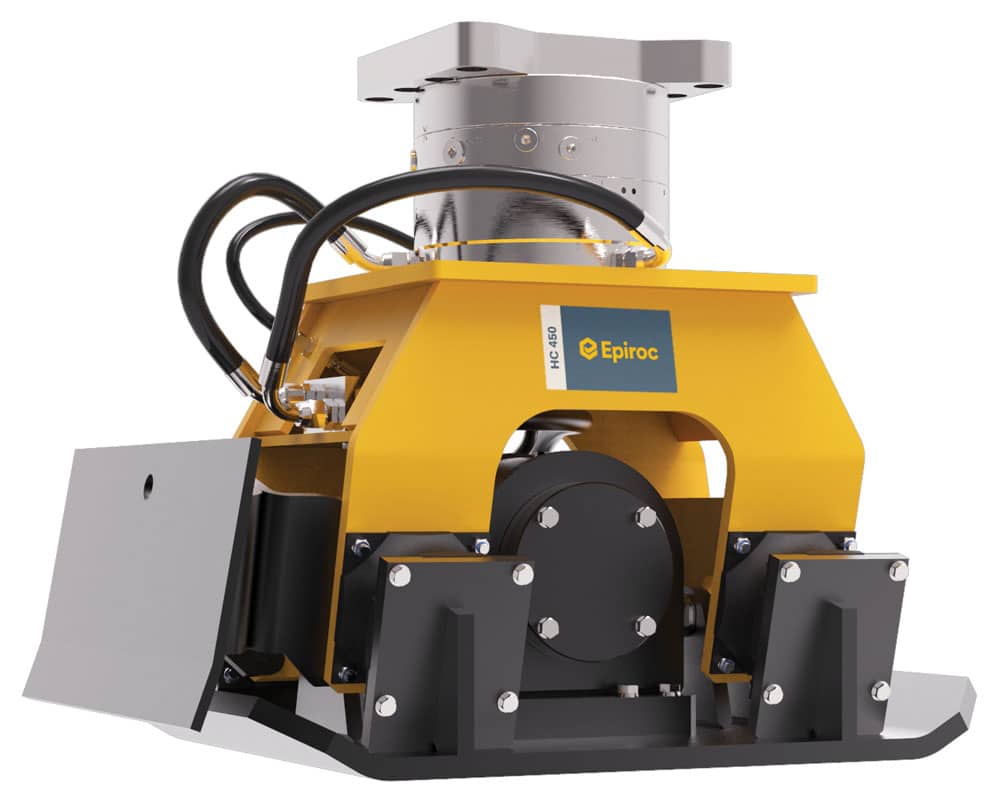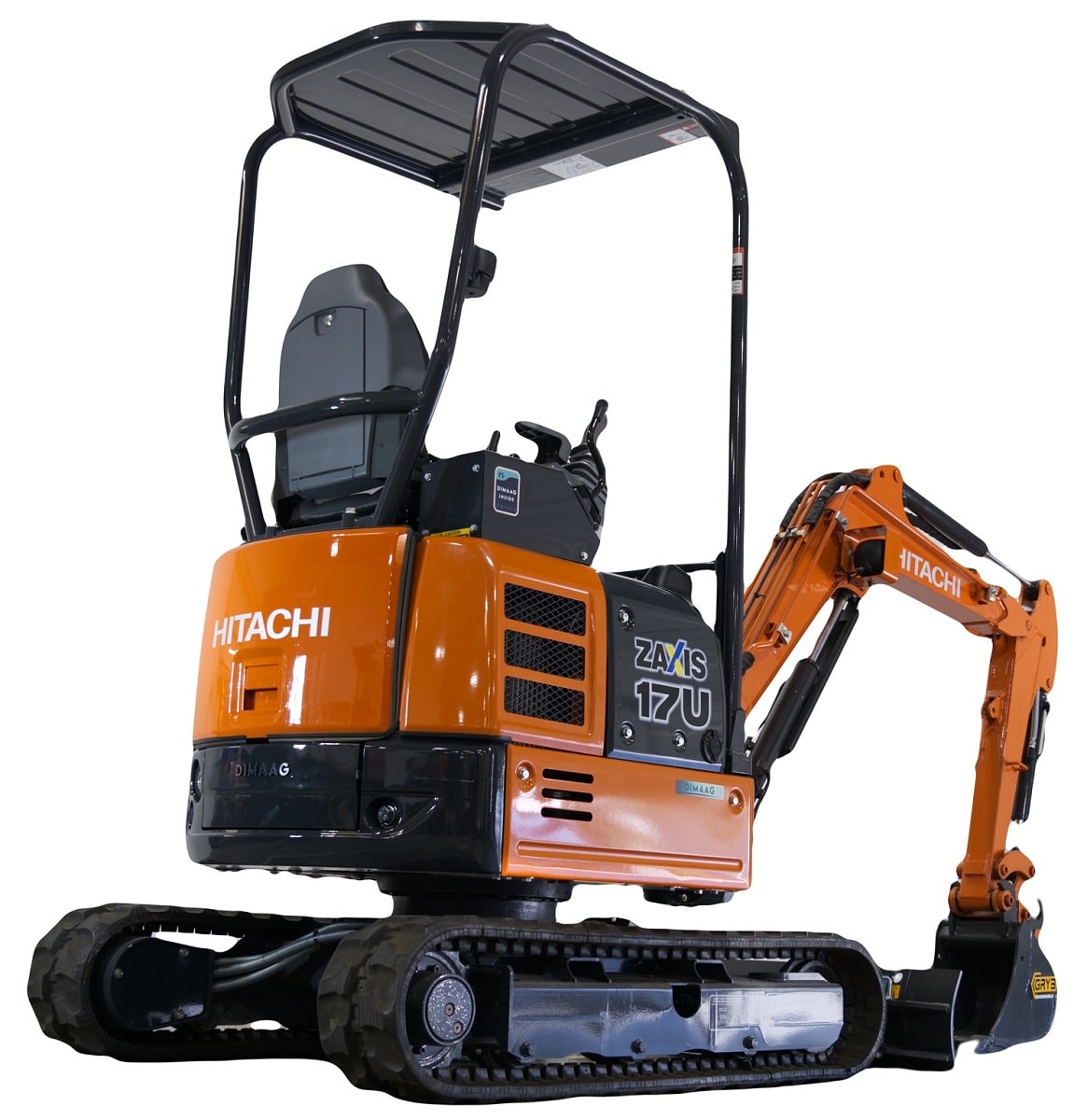Excavator Turned Compactor: A Quick Q&A About Hydraulic Compactor Attachments with Epiroc
Hydraulic compactors are one of many attachments that can turn a compact excavator into a powerful multi-tool on the jobsite. For insight on hydraulic compactors — from ideal applications to selection tips to maintenance recommendations — we sat down with Rich Elliott, product manager of hydraulic attachments at Epiroc.
What are hydraulic compactors used for?
Compactor attachments are designed for effectively compacting soil in trenching, ground leveling, embankment construction, driving in and pulling out posts, sheet piling and other formworks. Good examples are pipeline backfills and road or railway slopes. They’re ideal machines for applications where the task is to compact soil on slopes or in confined places where self-moving plates or rollers cannot operate.
How do these implements work?
The hydraulic compactor consists of four main components. The bottom plate is made of wear-resistant steel, and the eccentric element bolted onto it gives it a vibration force. The eccentric element is rotated by a hydraulic motor that requires pressure and return lines from the carrier, and sometimes a case drain line from the motor to the tank, depending on the hydraulic system of the carrier. This vibrating lower part is mounted on a top frame with rubber pad isolators. On top of the frame can be a hydraulic rotation motor or free rotating plate where the adapter plate is mounted, or sometimes it is bolted directly to the frame. Some compactor attachments can get up and running quickly with no special installation required on the excavator. Standard adapter plates and attachment brackets can simplify attachment to the compactor.
What are the advantages of using a hydraulic compactor attachment?
Machine-driven soil compactors work quickly and economically and are easy to operate. They offer better compaction performance and productivity than walk-behind units. Compactor attachments are also quieter and safer than their walk-behind counterparts. A compactor attachment creates little noise and offers added safety benefits, especially when used in trenches, because there’s no longer any need for someone to stand directly in the workspace. In addition, both the operator and the surrounding environment remain unaffected by the vibrations of the working equipment. That maximizes operator comfort and removes restrictions on the period of use per working shift.
What are common sizes for compaction plates for smaller excavators, and how do you properly size the attachment for a job?
Compactors for smaller excavators come in a variety of sizes. As an example, the Epiroc lineup of hydraulic compactors includes three options for excavators under 8 metric tons (17,637 lbs):
• HC 150 for carriers in the 2,200- to 6,600-lb machine class
• HC 350 for carriers in the 6,600- to 17,600-lb machine class
• HC 450 for carriers in the 8,800- to 19,800-lb machine class
The model should be selected according to the carrier size and typical flow capacity of the auxiliary circuit. Choose the compactor that suits the carrier size, not one that is too small or too large. In trenching applications, we recommend choosing a compactor and plate width that meet the contractor’s common need. Contractors should also consider the multiple ways this attachment will be used in compaction and extraction. Many compactors need to be modified prior to use for extraction or the isolators will be stretched and destroyed. Our compactors offer an axle bolt that should be installed when using the compactor for extraction. These axle bolts will prevent the isolators from getting damaged.
What are the major options when selecting a unit?
A continuous rotation device that is available on some compactors makes it easier to position the compactor. Even areas of the terrain that are hard to access can be reached more easily, enhancing the productivity of the compactor. Backfill blades can make the attachment even easier to use. These blades assist with pulling material back into the trench or area that will need to be compacted. They can also be used to level off the path so that work can progress smoothly and protect against any material being thrown up. An integrated flow rate and pressure control valve can help ensure safety, because it prevents hydraulic overloading of the compactor. This is an added bonus when it comes to safety and saving time, especially when using the compactor with different carrier machines. Finally, consider models with offset housing that better distributes force across the plate, which means less stress and wear on the attachment during operation.
What operational insights can you share?
Operators should follow all of the instructions in the safety and operation manuals for their specific manufacturer’s compactor. Water and air are pressed out of the material to be compacted during the compaction action. The degree to which a material can be compacted mainly depends on the following characteristics:
- Form and size
- Water content
- Depth of the layer to be compacted (the compaction result can be increased if the layer height is less)
At Epiroc, we outline the following operational process for compacting:
- Place the hydraulic compactor on the ground.
- Make sure that the entire tamper plate makes contact with the ground.
- Switch on the hydraulic compactor.
- Exert slight pressure on the hydraulic compactor and move it slowly along a straight line.
- The ground/soil is compacted by the frequency of the tamper plate. Exerting excessive pressure with the carrier does not improve the working result.
- Switch off the hydraulic compactor, lift it and put it back on the ground elsewhere to compact the next section.
- Try the compactor on a short test distance to determine the suitable layer depth and to find out how long the hydraulic compactor has to work on any single point to achieve the compaction required.
- If necessary, recompact a section that you have already worked on.
When driving something into the ground, the Epiroc manuals state:
- Check that the tamper plate makes contact with any sheeting or post that has to be driven into the ground.
- Switch on the hydraulic compactor.
- Exert slight pressure on the hydraulic compactor and have it impact the sheeting or post a couple of times.
- Switch off the hydraulic compactor, lift it and put it back on the ground elsewhere.
What maintenance recommendations do you have?
Work interruptions can occur due to manual or insufficient lubrication. A continuous lubrication system can make a compactor virtually maintenance-free. For systems with continuous lubrication, we recommend yearly oil changes and ensuring proper oil levels prior to each operation. Use of the proper oil reduces the risk of scoring and abrasion, provides reliable protection against wear and corrosion and offers high oxidation stability. This results in reduced maintenance cost and optimized machine lifetime. The main service point we emphasize for all hydraulic attachments is to ensure that the carrier’s auxiliary circuit is set within the operating parameters and requirements of the attachment.
Troy Johnson is a writer at Performance Marketing.






